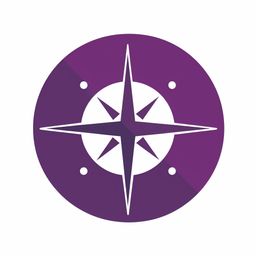DPS 周刊 138 - 如何在7个月内登顶14座8000米以上的高峰?

2024年的第二个月一眨眼就过去了,这个月读完了这几本书:
- Beyond Possible
- Invisible Trade II
- Invitation to a Banquet
- 毛泽东的大饥荒
- The Art of Loving
其中印象最深的是 Nims Purja 所写的 Beyond Possible。这本书记述了他如何从一个尼泊尔边远乡村的小男孩,成为廓尔喀军团的一员,再到成为 Special Boat Service (SBS) 的第一位廓尔喀,最后在六个月内完攀14座8000米以上高峰的第一人。完攀14座高峰的纪录片叫 14 Peaks: Nothing Is Impossible,可以在 Netflix 上看到。
能取得这么多成就,Nims 不是一个简单的人。他真的会为了他的目标而拼命,比如为了加入 SBS,他做了大量体能储备,还为了文化上的融入而学习英国的文化:
I’d rise at 8 a.m. to haul my arse around the streets with two or three Gurkha buddies, the group operating in a relay system, where I was the only soldier prevented from taking a break.
So to prepare for the culture shock, I decided to learn a portfolio of British jokes. Dad jokes. Dirty jokes. Jokes from old sitcoms and stand-up shows.
尽管他体能超人,经常在高山上开路,但在最后登顶前,他会等同伴会和,然后一起登顶。
Around ten metres from the peak, as some of the slower lads in the line-fixing crew caught up, I held back from making the final push alone. ‘Brothers,’ I thought, ‘We’re doing Everest as a team.’
It’s easy to work to your own pace in a group setting, especially if you’re the fastest or strongest in the pack, but the people around you will soon lose faith.
为了准备攀登14座8000米高峰的 Project Possible ,他不仅要做各种体能储备,还要亲自筹款。
Most mornings I got up at 4 a.m., working on my social media outreach for a few hours before racing to the 7 a.m. train into London from the south coast.
他屡次在登顶下撤途中救人,而且一救就是好几个。为了让救援直升机把伤员和他的队友一起接走,他宁可一个人等到最后,因为这些直升机有可能抛下其他人,但是不敢抛下名声在外的 Nims。
‘Not yet,’ I said. ‘Please take all of my team first. Then come for me. I’ll be the last man.’
Growth
I was broke from the beginning, born on 25 July 1983 in a village called Dana, in the Myagdi district in western Nepal.
Kickboxing had been my first step towards becoming a man.
I took my first steps towards the highest place on earth in December 2012, when I made the trek to the foot of Everest’s intimidating peak at the age of twenty-nine years old.
Then in 2014, I climbed my first Death Zone peak. Dhaulagiri was a beast.
I had broken two world records – by climbing Everest and Lhotse in ten hours, fifteen minutes and then topping Everest, Lhotse and Makalu in five days. I was also the first person to climb Everest twice, then Lhotse and Makalu in the same season.
I’d climbed from the summit of Everest to the summits of Lhotse and then Makalu in forty-eight hours and thirty minutes, smashing my time from 2017.
I’d finished the Pakistan 8,000-ers in 23 days; the world’s five tallest mountains (Everest, K2, Kanchenjunga, Lhotse, Makalu) had been climbed in seventy days (when I initially planned to do it in eighty)
I had conducted nineteen successful 8,000-metre expeditions in total; thirteen of them had been undertaken in 2019 and nobody had died on the mountain under my leadership, let alone lost any fingers or toes.
Additionally, I’d climbed the most 8,000 metres peaks in a single season (spring), by topping Annapurna, Dhaulagiri, Kanchenjunga, Everest, Lhotse and Makalu in thirty one days.
Fastest time to climb all fourteen mountains above 8,000 metres. Six months, six days.
Talents
My powers of recovery were also impressive. I often descended from peaks at speed, partying through the night in base camps and moving onto my next expedition the following morning, hangover or no hangover.
By the time I reached the peak, having trailblazed over 70 per cent of the route, I was not only surprised at what I’d achieved, but emboldened.
I burned alone for 450 metres, from Camp 4 to the Balcony. It felt important that my teammates realised I was happy to put in the hard yards, rather than asking a Sherpa guide to do it instead.
Lessons
Mindset
I was out of control and the two rules I’d set previously for myself on expeditions were being tested under extreme pressure. One: Hope was God. Two: The little things counted most on the big mountains.
The mountains were delivering their first major lesson: Never burn yourself out unnecessarily.
Because it’s better to have one casualty than two, the best response for a party is to leave.
Only humans showed bias, the mountains were impartial. There was no judgement.
As I’d learned in war, every obstacle or enemy was another challenge to be figured out and overcome.
I was fast learning that the biggest challenge for any climber was self-awareness; it’s impossible for anyone to run or hide from themselves, their truth, on the mountain.
The biggest problem with adopting such a bold position was the mountain-climbing community: it was packed with alpha males and females, exactly the type of people that turned up in the Special Forces. I’d learned during service that the best way to work with personalities of that kind was to pretend to be bigger and better than all of them.
Rather than allowing negative emotions to paralyse us, we transformed fear into an inspirational energy, a motivator.
Be confident, but show respect.
Mountaineering
I’d learned very early on not to leave my kit anywhere on the mountain; it was best to keep everything with me at all times, just in case.
Very now and then, the leading Sherpa would take a break from making a path through the waist-high drifts with his footsteps, allowing one of his teammates to take over for a while.
He would then fall to the back of the line until it was his turn to head the charge once more, while the rest of us matched his prints in the snow, which made for fairly easy work.
The first was applicable to shin- to knee-deep snow: in those conditions a climber had to make footfalls by lifting their knee to their chest with every step, then planting their foot firmly.
The second was for more extreme conditions when the powder was thigh- or waist-high. In those cases, the leading individual had to push forward with their hips, creating a pocket of space before lifting their leg out and rolling the hip over in order to make the next step.
‘Yeah, but this is a dangerous time. People die on the way down because they wait too long and get caught out by the weather.’
The most important part of any climb was to get back down, quickly and safely.
For that reason, from now on, I was climbing above the higher camps on an 8,000-er with bottled air, even though it wasn’t considered the purest form of high-altitude climbing by some sections of the mountaineering scene.
I never took energy gels, supplements or snacks; everything I ate on the mountain depended on my mood and I often worked off egg-fried rice and dried chicken.
I always kept a one-litre Thermos with me. My trick was to pack a cup with snow, melting it down with a small splash of hot water from my flask.
It was all we could do to stay awake, until someone had the idea that we should shout and scream at one another instead.
The cold air comes in through the buff, warming it slightly, which protects my lungs from failing in the sub-zero temperatures.
It might sound like a minor detail, but that one technique saves my body from hypothermia, because the air I’m taking in is not as cold. It also protects my fingers from frostbite, because I don’t have to take off my gloves to get to my cleaning cloth.
Believes
‘Yeah, I could hurry up,’ I said. ‘Maybe, I could just skip this and say, “Job done!” But the reason I’m doing this properly is because I don’t want the Gurkhas to be blamed for missing any IEDs. It’s not only about me . . .’
‘My life doesn’t mean anything here. But reputation does. That’s why I’m doing this job properly.’
I had hope. And hope was God.
Undeterred by the pressure upon me, I focused only on the twenty-four hours ahead, rather than worrying about the succession of tests that were being lined up for my group over the coming weeks.
One of the key attributes of anyone operating within the British Special Forces was their ability to become the Grey Man. In a military or surveillance capacity, this process involved blending into the surroundings to avoid detection, or unwanted scrutiny.
I had a code: bravery over everything else. And there was no other way for me to live.
Disguising my pain and suffering was a skill I practised at all times and I did so by focusing intensely on the job in hand; it helped to shut out the chaos around me.
I forced myself to believe the cylinders had been swiped to save the life of another climber.
You don’t have to prove anything to anyone.
But presented with the choice between dying slowly and uncomfortably through age, or passing away during an expedition or mission, my feelings were clear: I would definitely take the latter.
I also want this to be an inspiring story for generations of people, no matter where they come from. This endeavour is for mankind.
我们已经开通了微信支付和支付宝支付,如果你想及时读到 DPS 的全文,不妨直接付费订阅:
关于支付的详情介绍,可以访问这一页面。
Recap
最近豆瓣生活组有一个帖子非常火,即劝退大龄出国转行。以至于豆瓣都专门推了这个话题 - 不要大龄转行辞职出国。
这个帖子的大致意思如下:
不建议超过30岁转行或出国。否则,你们可能会发现自己的生活水平下降,职业生涯提前结束。原因包括:
- 人离乡贱:在任何地方,当地的学历和经验通常都会被优先认可。如果你没有当地的根基,生存将会非常困难。
- 行业深耕和积累至关重要:专注于某一行业的深入发展和经验积累是非常重要的。
- 经济形势与就业竞争:不要高估自己的能力,好工作很难得,请珍惜手头的工作。职场往往是这样,你的收入并不完全由能力决定,运气也占据了很大一部分。如果不珍惜这份幸运,一旦错过,可能就不会再有了。

Jakob Greenfeld 分享了一个简单的提高生产力的方式:
- 观察自己头脑的模式;
- 将不同的模式分类,比如他分成了这几类 -- 分心模式,分析模式,机器人模式和劳累模式;
- 根据这些模式,分配对应的任务给自己 -- 比如在分析状态下就多用脑,在机器人模式下,就合上电脑,去干其他事。

Herbert Lui 在提交自己的稿件给编辑时发现:
- 一旦他接受了编辑的修改意见,这些修改意见就消失了;
- 为此,他创建了一个新的文档,有三栏,第一栏记录他自己的版本,第二栏记录编辑的修改意见,第三栏记录他自己观察到的差异和想法;
- 他把同样的技巧运用到生活中,开始对比自己决策前后的差异。

Mark Manson 认为快乐是一种流动的状态:
- 快乐本身是一个旅程,我们每天的选择都会影响这段旅程;
- 快乐的要义不仅仅在于感觉上的,还在于目的和意义;
- 负面情绪并不完全和快乐对立,只有负面情绪的存在才能让我们更珍惜快乐;
- 社交也能促进我们的快乐;
- 换一个角度,如果我们每天都将死亡铭记在心,那么一切都是暂时的,所以我们也就更能珍惜当下。

DPS 558 期曾经推荐了 Jason Roberts 写的 How to Increase Your Luck Surface Area,即运气 = 诉说 x 行动。Sean Murphy 在此基础上,拓展了这一观点:
- 时间是有限的,所以诉说和行动两者都会耗费一定的时间,如何平衡这两者就非常重要;
- 如果你擅长行动而不擅诉说,那就努力多诉说,反之亦然;
- 具体到每天如何支配这些时间,要看你的精力如何分布;
- 很多项目像是马拉松而不是短跑,所以掌握好节奏尤为重要。

这是 Dan Wang 写的2018之信,可能是他写的八封年度之信中最无聊的一份(2017-2023):
- 这一年他游历了不少城市,最喜欢的是重庆和杭州,一个火辣,一个平静;
- 他的工作重心主要在研究中国的半导体产业和产业升级上,摩尔定律实在半导体行业中的一个发展规律,如果有其他产业也能稳定地保持这种增长速度,那么人类社会可能会变得更美好;
- 他十分推荐 Rene Girard 写的 I See Satan Fall Like Lightning,并且认为可以拿来阐释文化大革命形成的动因。

Archive


本周的生产力日报集合就到此为止,如果你有什么建议,也欢迎留言告诉我们。如果想要收到最及时的推荐,不妨订阅我们的频道,或者付费解锁更多增值内容,我们下期见。





Comments ()